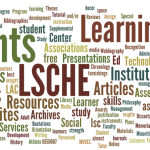LSCHE "Nearby History" *
Summary. LSCHE evolved from a collection of handwritten notes related to postsecondary learning that was started in 1965 by Frank Christ, Director of the Loyola University Study Skills Center. It was subsequently transferred to a keysort card system, then to a PLATO-based information project, to a desktop computer program managed by TeaMate software, to a PIM (InfoSelect), then to the present web portal in the mid-1990s, initially hosted on a server at Paradise Valley Community College in the Maricopa County CC District with Dr. Rick Sheets as its webmaster and Frank Christ as its content provider and editor.
The LSCHE web portal has grown to mostly text-based Learning Support Center related information in a collection of more than 5,000 files in more than 500 web pages. LSCHE’s Home Page lists twelve major resource categories, however, the “View All Resources” on the home page or “Resources” from the top menu provides a site map of more than 95 pages of resources accessible from the 12 major categories from this one web page of resources. Many of those Learning Support Center related pages contain yet another level of descriptors and resources. From a map of the United States, there are more than 1500 links to Learning Support Center sites, which are entered and maintained within this site, as well as, information on Learning Support Center related organizations, Learning Support Center related national and regional conferences, and some best practices for online support and instruction.
LSCHE as a website is now hosted independently in support of CLADEA (the Council for Learning Assistance and Developmental Education Associations) and its six member organizations (ACTP, ACTLA, CRLA, NCDE, NCLCA, and NOSS). See cladea.info.
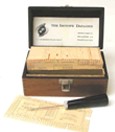
In the Beginning. LSCHE began around 1965 as a collection of professional reading and conference notes relating to post secondary learning assistance with a special emphasis on learning assistance centers.
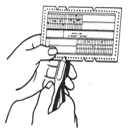
As the note collection grew and it became difficult to categorize and retrieve information, notes were transcribed to the McBee keynote card system. In a few years, the McBee keynote cards were discontinued by the manufacture thus limiting the number of notes that could be collected.**
Entering the Computer Age. Around 1973, when Christ was an administrator for a California State University and College PLATO trial, Christ read an article In the October 1976 issue of Audiovisual Instruction written by Olson and Magero (1) that described how Rockford College of Medicine was using PLATO to develop an instructional resources catalog. Seeing the usefulness of PLATO to develop and disseminate an information database, Christ developed a taxonomy for his notes and with the help of Tom Sponheim, a faculty colleague these notes became LINDEX, a computer database on PLATO using PLATO’s Tutor language.
LINDEX Description. Lindex was described as an online information system relating to learning skills acquisition and assistance that would enable educational administrators, counselors, and faculty to increase their effectiveness and efficiency in helping students to achieve academic success by giving them the capability to do the following: 1)locate study skills, basic skills, and tutorial materials, 2) locate learning center development, program management, and evaluation resources, 3) locate learner information, research, and resources, 4) locate and evaluate learner materials and programs, 5) locate descriptions, research, and resources on teaching/learning strategies, 6) locate information on professional associations, periodicals, conferences, job opportunities, and bibliographic resources, 7) download all LINDEX material. Lindex was introduced publicly at the 1989 CRLA conference in Seattle. A description of Lindex was written by Bill Broderick in the WCRLA Computer Technology Newsletter (Vol. 3, No. #, February, 1989).
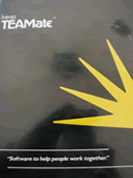
Transition to Bulletin Board Software. Although dissemination was limited to PLATO only users, this development demonstrated the power and usefulness of such a database. Unfortunately in a transfer of data within the CSU system, the LINDEX tape was destroyed. However, fortuitously hard copy of the database had been printed and retained by Christ. Some years later, in perusing a computer magazine, Christ noted that a company had eveloped a multi-user BBS software (TEAMate) that could be used to create a hierarchical database similar to what had been developed on PLATO. The software company was located in Manhattan Beach just an hour travel from Christ who was at CSU Long Beach. After seeing the software, Christ purchased TEAMate and began transferring his information to it.
Unfortunately, TEAMate could only reach a small and exclusive audience and was a DOS program which became obsolete with the advent of Windows. When a software problem developed in TEAMate and Christ contacted the company for assistance, he was told that the company would no longer service the software. LINDEX reverted back to a one person database for learning assistance. Then came the Internet and with it endless possibilities to develop a web portal for a wide audience of Learning Support Center directors, staff, and their institutional administrators.
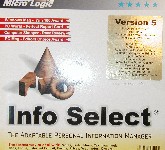
LSCHE/WI on the Internet. During a conversation in 1996 with Dr. Rick Sheets , then Director of the Paradise Valley College Learning Assistance Center and a Co-director of the Winter Institutes for Learning Assistance professionals, LSCHE/WI was developed as a cooperative venture between Maricopa County Community College District and the University Learning Center at the University of Arizona where Christ was a Visiting Scholar. Dr. Sheets provided the expertise and resources as its webmaster to develop the web site and Christ became its content editor. Christ used InfoSelect, an information manager software to collect and edit prospective LSCHE material and via email and telephone conferences discussed and sent this information to Dr. Sheets to be placed on the LSCHE web site. When Macromedia’s Contribute program became available in 2002, Christ purchased it. Using a connection key to the MCCCD server from Dr. Sheets, Christ was able to add, edit, and delete LSCHE web page material from his home computer quickly and easily without affecting the LSCHE design, layout, or code.
In 2000, LSCHE initiated an annual learning center website awards program and partnered with NCLCA in 2004 for this award program.
In 2009, Alan Craig became LSCHE’s first associate editor with responsibility to maintain and add to the current list of learning center websites. Through his efforts, the list now numbers 1500 learning centers which includes centers not only in the USA but also in Australia, Canada, and New Zealand.
In 2010, Dr. Sheets proposed that CRLA sponsor LSCHE with its own domain. Therefore, with CRLA Board approval, LSCHE moved from the Maricopa Community College District server to its new URL: lsche.net. This move to a new add-on domain and server allowed LSCHE to move from an all text-based web portal to one which could includes video, audio, and social media on its website.
In 2012, CRLA moved to a management company to support their website domain. LSCHE moved from an Add-on domain sponsored by CRLA, to its own primary domain as lsche.net. The LSCHE site had grown to more than 500 pages and many of them throughout the site needed updating. Frank Christ, Alan Craig, and Rick Sheets talked about a new look and how to update.
Though we lost Frank’s person in December 2012, his spirit lives on with us in LSCHE’s new look, which went “live” and was announced on February, 26, 2104.
LSCHE Recognition and Reviews

- In January, 2000, LSCHE was reviewed in StudentAffairs.com (http://web.archive.org/web/20080516191009/http://studentaffairs.com/web/reviews/LSCHE.shtml) and received its highest rating (five apples).
- In the September/October (2001) issue of The Technology Source, a peer-reviewed bimonthly periodical published by the Michigan Virtual University , LSCHE was its Spotlight Site of the month.
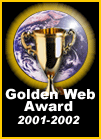
- In 2001, LSCHE was awarded a Golden Web Award.
- In 2003 and since, LSCHE was accepted by CRLA as a public service exhibitor at its annual conference in Albuquerque.

- In 2012, LSCHE was awarded the NCLCA INNOVATIVE USE OF TECHNOLOGY AWARD.
* In the context of college reading programs, the term, “nearby history” appeared on pages 14-16 in Stahl, N. A., & King, J. R. (2000). “A History of College Reading, ” a chapter in Flippo, R. F., & Caverly, D. C., Handbook of College Reading and Study Strategy Research. Lawrence Erlbaum Associates, Pp. 1-33. The term originally appeared in Kyvig, D. E., & Marty, M. A. (1982). Nearby history. American Association for State and Local History.
** For those who remember and can access the Whole Earth Catalogs, there is a description and drawing of these keysort cards in the 1971 edition, page 320, of the keysort cards used by its editors to collect and manage the catalog contents. Keysort cards were made of cardboard stock, about 5″ by 8″ inches, with a diagonally-cut corner, so the cards could quickly be aligned before sorting. Each card face had two parts: a rectangular central area where one would jot down information, surrounded by an outer margin with about 80 numbered, punched holes. Each number is assigned a topic name appropriate and is notched with a special notching tool to identify it. To use the keysort cards, you first align the cards, and then insert a sorting needle into the appropriate numbered hole on the margin of the cards with that number corresponding to the information topic. When the needle is lifted, the cards with the indicated number are separated from the rest of the cards and the information that is wanted drops out.surrounded by an outer margin with about 80 numbered, punched holes. Each number is assigned a topic name appropriate and is notched with a special notching tool to identify it. To use the keysort cards, you first align the cards, and then insert a sorting needle into the appropriate numbered hole on the margin of the cards with that number corresponding to the information topic. When the needle is lifted, the cards with the indicated number are separated from the rest of the cards and the information that is wanted drops out.
1. Olson, D., & Magero, J. (1976, October). Piggyback onto PLATO. Audiovisual Instruction, 22-23.
